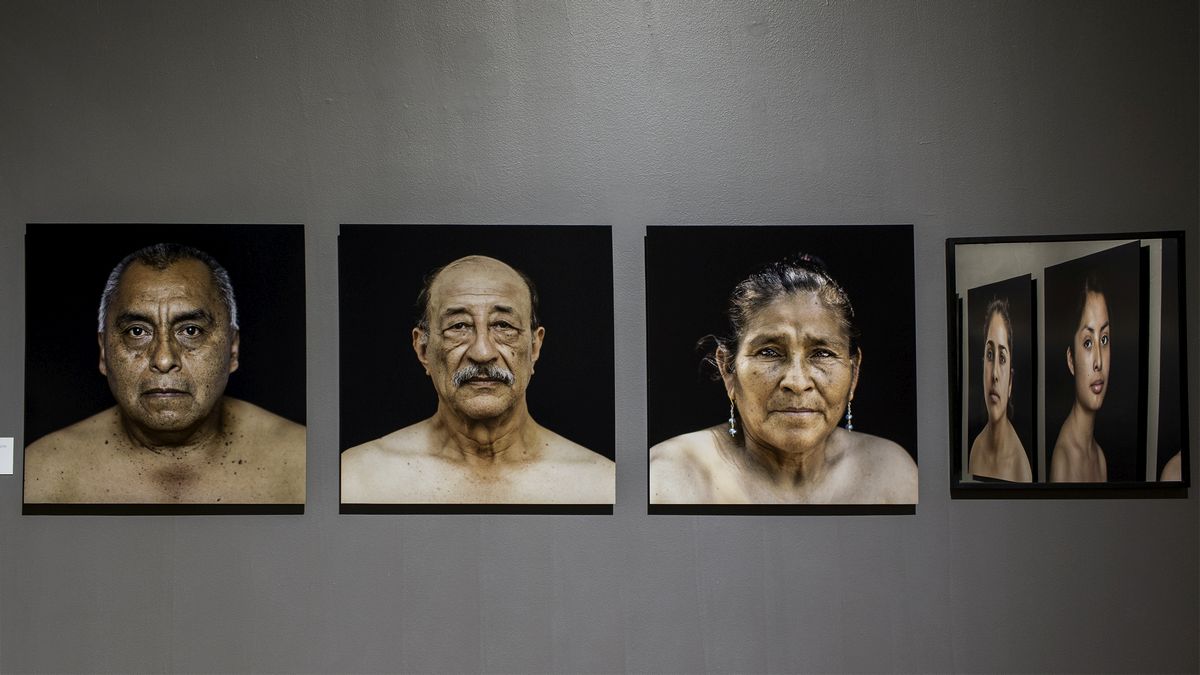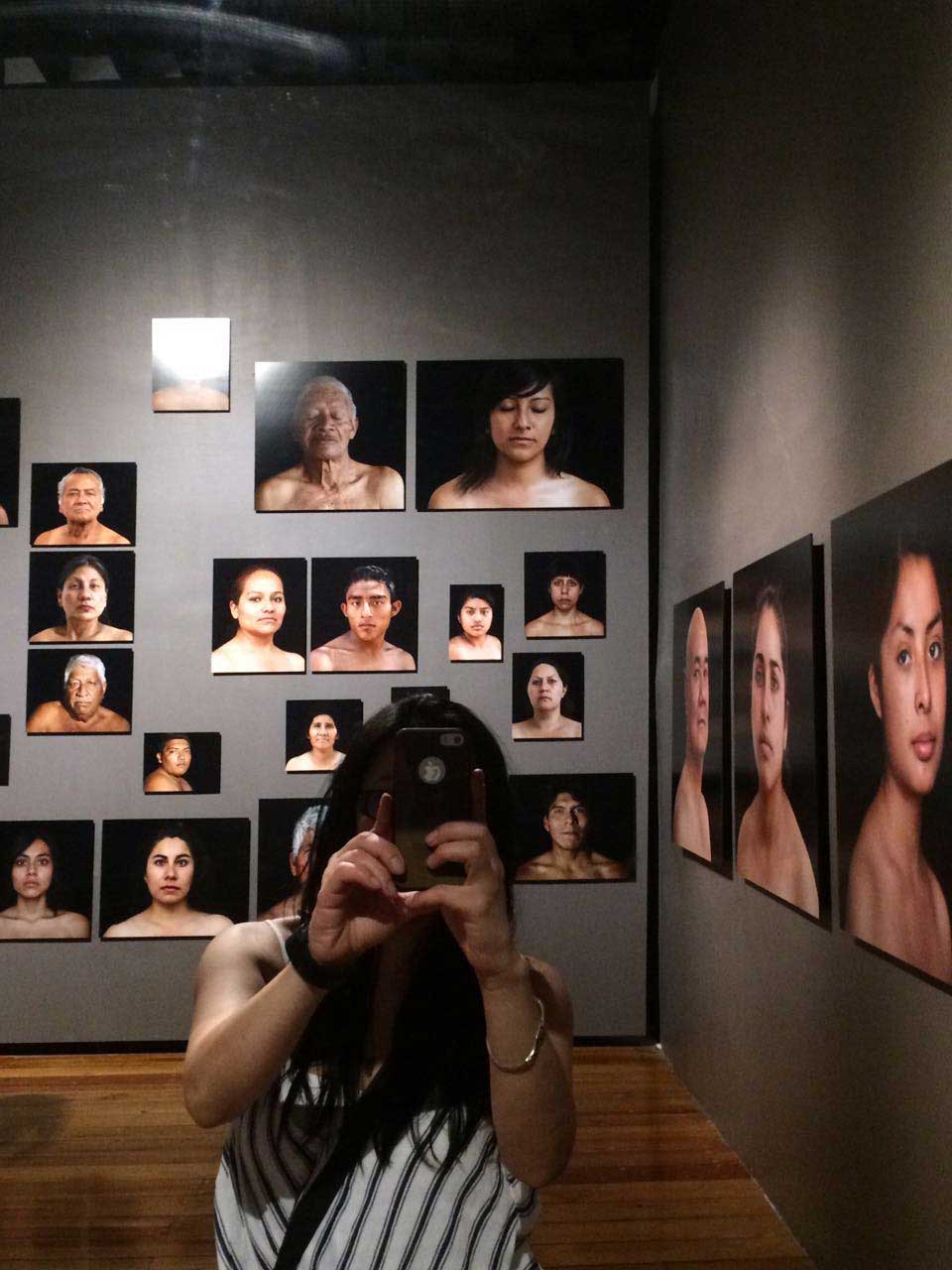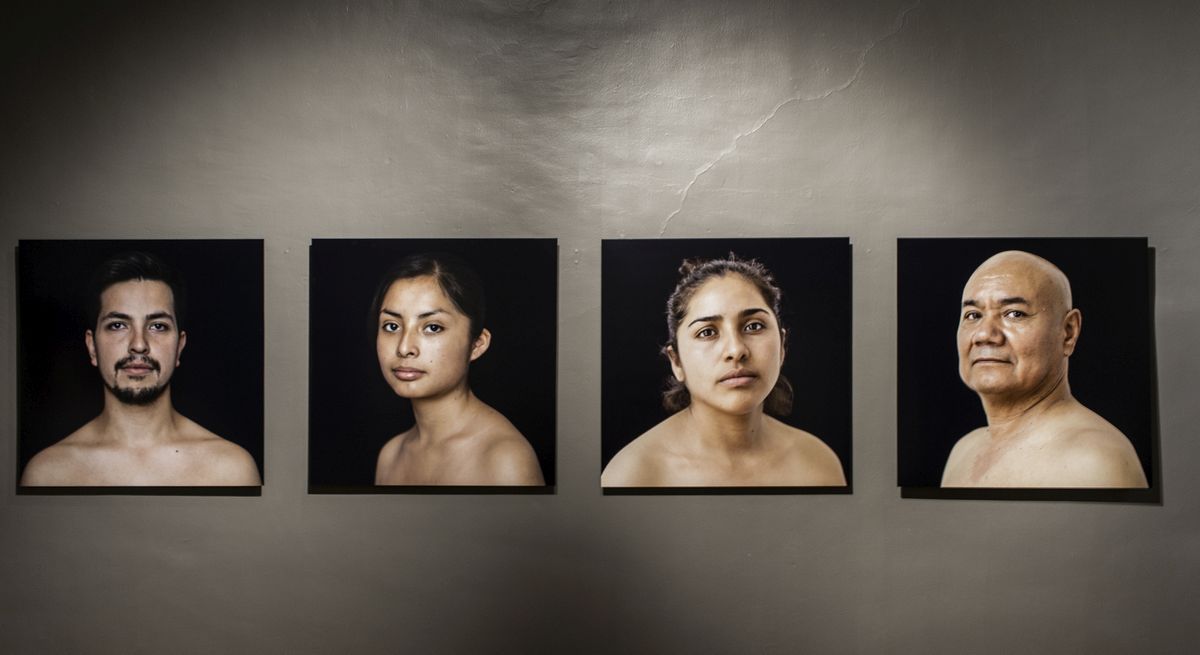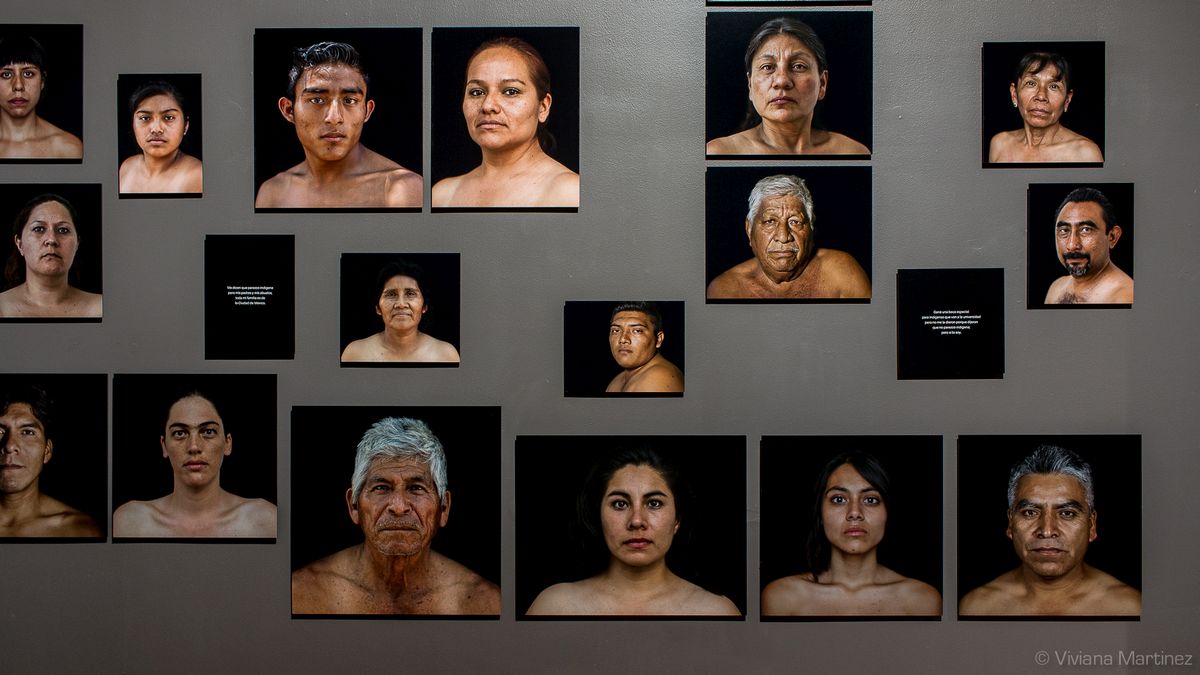Indigenous people tend to be represented in very specific ways, varying between the picturesque, paternalism, folklore and clearly unfavorable representations. Non-indigenous people are portrayed using different criteria. What happens when people from both groups are portrayed the same way? Barriers disappear and it becomes difficult to know who’s what; there’s a distancing effect, and we don’t recognize those whom we see in our everyday surroundings. Our perception is freed from the references that fetter it and equality emerges in all its diversity. By breaking with established clichés, the gaze of the artist dignifies everyone. There’s no longer a place for discrimination. It’s the beginning of the abolition of racism.
 Margot Sputo, Indigenous/Non-Indigenous, 2015-2016, Photography, César Carrillo Trueba (Facultad de Ciencias de la UNAM) Collection.
Margot Sputo, Indigenous/Non-Indigenous, 2015-2016, Photography, César Carrillo Trueba (Facultad de Ciencias de la UNAM) Collection.
Todo lo que
vemos
podría ser
de otro modo
Ludwig Wittgenstein





